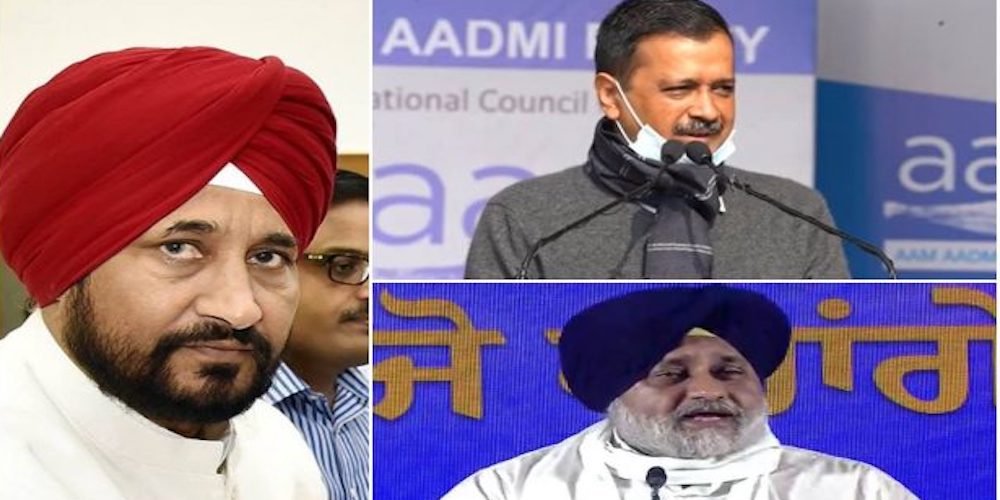NRIs and Punjab Polls

One of the notable features of the ongoing electioneering in the state of Punjab is that unlike in 2017 Assembly polls, this time the Punjabi Diaspora is little excited.
A report in Times of India says that many NRIs feel disenchanted as they don’t see their dream of a new Punjab getting fulfilled by leaders, especially those who have been shifting parties.
In the 2017 elections, many NRIs had come home personally by taking long leaves to campaign for the Aam Aadmi Party (AAP). They contributed financially to their favourite parties, particularly the AAP, which promised “a change”. But this time, at the most , says the Times of India, NRIs are at the most making long calls to their relatives to find out what is happening.
The paper quotes one Gurbhag Singh, a 73-year-old NRI from Auckland in New Zealand, who originally belongs to Kamalpura village, saying , “In 2017 elections, NRIs had shown much interest as they expected a new party (AAP) to gain power, but this time around they have lost hope.” He said since the Aam Aadmi Party (AAP) is welcoming leaders from traditional parties, including those who face charges of corruption, NRIs have doubts whether such people can bring about any change in the system. “In the previous elections, many NRIs had gone to Punjab to support AAP, but this time around not many have done that,” said Gurbhag, whose native village has a substantial NRI population. He said not only NRIs had supported a political party financially, but also helped it by canvassing for its candidates.
Gurdeep Singh, an NRI from Kaddon village who lives in Canada, told the Times of India that “the majority of MLAs have no stand or sincerity to their own party, and therefore they will be of little use or even loyal to the public. They have become self-centred. Instead of focusing on public issues, they are more interested in personal accusations at other leaders. None of them are interested in the welfare of Punjab or Punjabis.”
Infact, in the 2017 elections, the NRIs were such an important factor that the then ruling Akali Dal had promised in its manifesto for the Assembly polls that it would acquire one lakh acreainly in the US and Canada, which would be made available to Punjabi farmers who want to relocate. The party had said that it would help the Punjabis in getting US and Canadian visas so they can emigrate and work in the vast stretches of agricultural lands available there.
Along with probably Andhra, Punjab happens to be a rare State that has a separate NRI (Non-Resident Indians) Affairs Department, which, not long ago, was handled by the chief minister. It is because the Punjabi diaspora, like its Telugu and Gujarati counterparts, happens to be an important component of the state’s polity, particularly during elections, be it for the panchayats, the Assembly or Lok Sabha.
Punjabi NRIs, predominantly Sikh, number about two million— around 8 per cent of the 25 million strong Indian diaspora. However, 85 percent of Punjabi NRIs are now concentrated in Europe, the US and Canada.
It is no wonder therefore that the then Congress chief ministerial candidate Amarinder Singh began his campaign in May 2016 by embarking on a tour to North America. That he was refused entry to Canada, which did not allow him to hold rallies for political purposes, is another matter, though it is alleged that the Canada government’s decision was influenced by Khalistani elements. Canadian Sikhs account for around 2 percent of Canada’s population.
The NRI factor in Punjab is particularly significant in the Doaba region that comprises nearly a quarter of the State’s population and includes Jalandhar, Kapurthala, Hoshiarpur, Phagwara and Phillaur. Known as Punjab’s NRI-hub because of the large-scale emigration to the UK, US and Canada, and more importantly, the continuous interactions between the emigrants and their family members here, the region has not only been helped by family remittances but also by philanthropic projects of the NRIs. Over the years, a number of ‘village welfare associations’ have been formed which perform functions ranging from setting up developmental projects to buying political influence.
For instance, they have set up the Guru Nanak Mission Medical and Education Trust in Nawanshahr district, National Rural Development Society in Kapurthala district and Village Life Improvement Board in Hoshairpur district. In fact, it was because of the initiative of the NRIs that a non-political outfit called ‘NRI Sabha Punjab’ was created way back in 1996 to address the problems of the NRIs in their ‘homeland’. And it has drawn support from every party and every government in the State. As a result, we now have NRI fast-track revenue courts, a judicial court in Jalandhar, and 15 exclusive police stations for the NRIs in various districts.
It is natural therefore that Punjab NRIs have always been politically active. Since the 2002 Assembly polls, some rich NRIs started entering the political arena by financing their favourite candidates, a few even contesting. A study showed how in the 2007 Assembly polls, more than $22 million (a conservative estimate) came to Punjab through the diaspora route from North America and UK. This figure, it is safe to guess, must have gone up steeply in subsequent polls.
There are many reasons why Punjabi NRIs are so involved in the State’s polls. The most important is their concern over the security of their property. In Punjab, it has been common to see properties of the NRIs usurped by caretakers and relatives in connivance with local politicians. They are equally worried over the rising corruption in public offices, drug abuse and unemployment and the farmers’ issues.
In sum, their overall disenchantment with the politicians of all parties – last time it was not the case with the AAP – has really made the electioneering dull this time.



